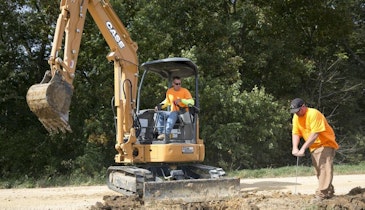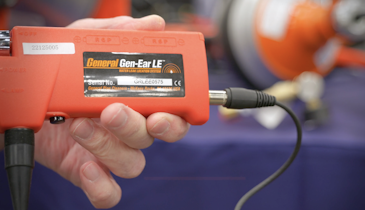We’ve received several questions and comments about “dead’’ or inactive septic tanks due to a lack of bacterial action. Further comments and discussion from readers on this problem are welcome. Maybe we can come up with some conclusions by sharing information.
Question:
When pumping a tank, do you recommend leaving a small amount of effluent in the tank, or pumping it dry?
Answer:
As we know, the purpose of pumping the septic tank is to remove the accumulated solids. The sludge on the bottom of the tank and the scum on the top of the tank are put into suspension by back flushing or with a mechanism that stirs the tank contents.
I suggest as much as possible of the suspended solids and liquid be removed from the tank. There are still plenty of bacteria in whatever material remains on the tank bottom and sidewalls.
In addition, we often forget the septic tank started working when the home sewage was deposited in a clean concrete tank. After installation of a new system, there are no bacteria, other than those in the toilet wastes being deposited into the tank.
Question:
I've been in the septic business for over 30 years. We pump and install. Our opinion, based on the number of years we’ve been pumping septic tanks, is that more and more septic tanks are dead.
We used to see a nice cake layer on top — between 5 and 8 inches thick — and a bottom layer between 10 and 12 inches thick, with the liquid in the middle to be relatively clean. Now, approximately eight out of 10 tanks we pump show no cake layer on top and the liquid level down between 10 and 14 inches is black. And when we get halfway into the tank, the liquid starts to get thick and heavy. By the time we reach three-fourths of the way, the liquid is so thick we need to backflush to liquefy the tank in order to finish pumping the rest of the tank. This happens even in tanks that receive routine maintenance and pump-outs every three years.
Would a live concentrated bacteria added to the tank on a routine basis replenish the septic tank so the natural effect can take place again and extend the life of the laterals?
Answer:
Your comment on dead septic tanks is very disturbing to me. The way you describe those tanks, there must be a lot of solids being discharged out into each drainfield.
In regard to “live concentrated bacteria,” there are plenty of them in the toilet wastes flushed into the septic tank. It shouldn’t be necessary to add more. If the tank is “dead,” something must be interfering with the growth of bacteria in the tank. It is not likely other bacteria introduced could survive and be effective in these circumstances.
Much of the sewage going into the septic tank is from the flush toilet. Some pumpers have told me septic tank problems are caused by “every flush” toilet bowl disinfectants. When the disinfectant is removed, the tank again becomes active. This disinfectant apparently is strong enough to diminish bacterial growth.
One septic professional told me years ago that when municipal water containing chlorine was used by the homeowner, the septic tanks were often dead. Apparently the small amount of chlorine in the water was enough to keep the bacteria from working. This would be a little like the “every flush” toilet disinfectants. There are some areas with a rural or community water system, but septic tanks are used for sewage treatment.
Others have said that the small amount of chlorine in the water should make little difference with all the organic matter being deposited into the septic tank.
Another professional reported to me that when people in a home were on heart medicine, their tanks often went dead. I am not sure why the heart medicine might cause that effect, but it was confirmed by other pumpers and I must assume that it is true.
It certainly is disturbing to me that eight out of 10 tanks you pump are not active and are apparently dead to bacterial action. This will certainly cause premature failure of a lot of soil treatment units.
Question:
We find that water filter systems are hard on septic systems. We can pump two similar septic systems — three-bedroom systems with five people in each home. One system has a water filter system that is back flushing twice a week with 200 gallons each time; the other has no water system.
The first system has no cake and contents look black. The other has a normal cake and sludge on the bottom. Don’t you think adding more than 20,000 gallons of extra water a year to a system is detrimental? We are having a hard time educating the water filter system installers to route their backflush out of the systems. It is easier for them to hook up to the septic.
Answer:
From a septic system pumping contractor: There have been problems with septic tanks not functioning as they should. One possible cause is the use of anti-bacterial washing products such as hand soaps and cleaning products. When the anti-bacterial products are used to excess, (pumpers) are finding no crust in the tank and the effluent has a more milky appearance.
Iron filters are a problem. The filters backwash about 200 gallons per cycle. One customer used 600 gallons per week to recharge the iron filter. Iron filter recharge chemicals may contain a bleaching agent, which is detrimental to bacterial action in the septic tank.
People who are on heart medicine or taking antibiotics may cause a problem with bacterial action in a septic tank.
From a water treatment expert: Iron filters do use 150 to 200 gallons to recharge and backwash. They may need to recharge several times a week. The chemical is potassium permanganate, which exchanges the iron on the manganese green sand in the filter. It is not common to have a bleaching agent in the recharge chemical for the filter.
When iron bacteria are in the water system, chlorine is fed continuously at a final level of 0.5 to 1 ppm.





